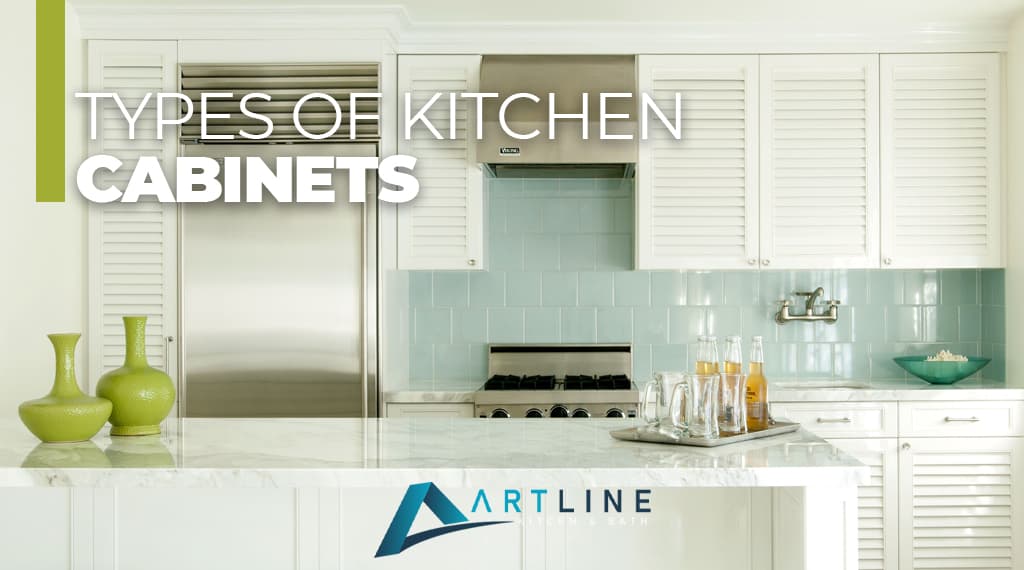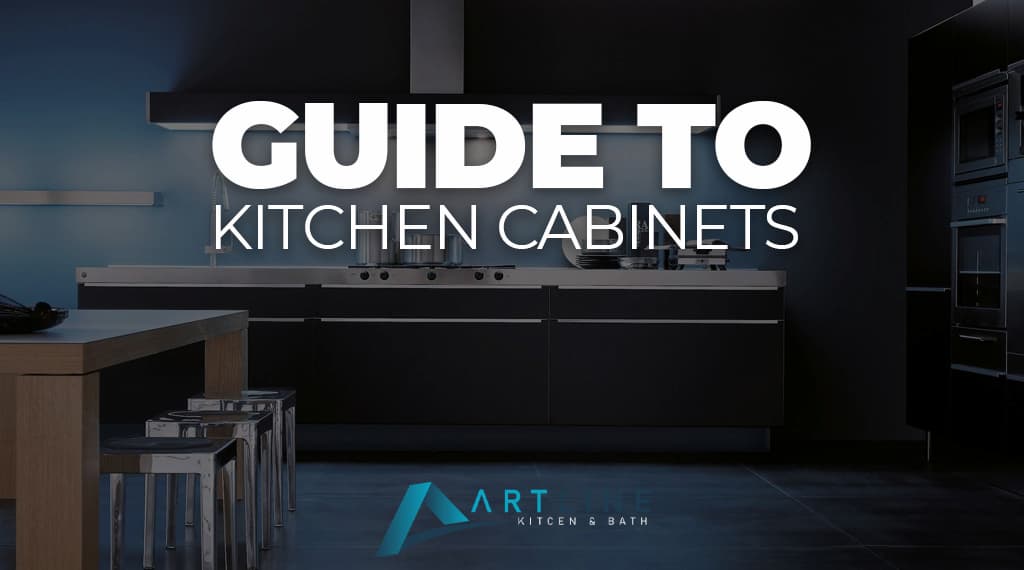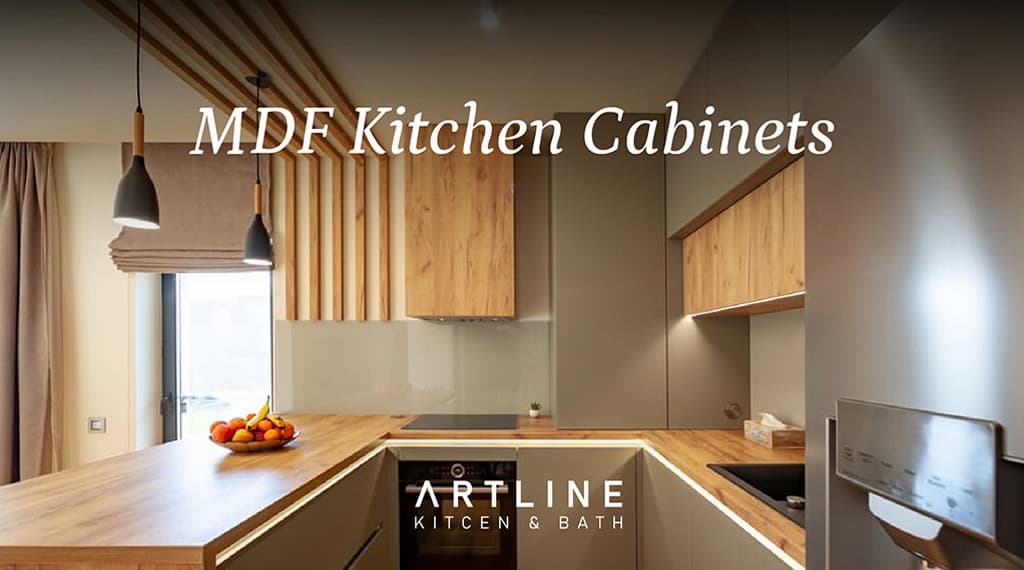MDF kitchen cabinets represent one of the most practical solutions for homeowners seeking high-quality results without the premium price tag of solid wood. Medium Density Fiberboard (MDF) consists of wood fibers and resin compressed under high pressure to create a dense, smooth material perfect for kitchen applications.
The manufacturing process combines fine wood particles with adhesive binders, then presses them into uniform panels. This method produces a consistent surface without the natural variations found in solid wood, making MDF kitchen cabinets an excellent foundation for painted finishes. Unlike particleboard, which uses larger wood chips, MDF creates a finer, more stable product that holds paint beautifully.
Kitchen cabinet manufacturers favor MDF because it machines cleanly, accepts detailed routing, and provides the smooth surface homeowners want for contemporary kitchen designs. The material differs significantly from plywood in both construction and performance characteristics.
Table of Contents
ToggleWhat Are MDF Kitchen Cabinets?
MDF (Medium Density Fiberboard) kitchen cabinets feature door and drawer fronts made from this engineered wood product, often combined with plywood or solid wood frames for structural support. The cabinet doors themselves consist of MDF panels that can be shaped into various profiles, from simple flat surfaces to detailed shaker styles with raised or recessed panels.
Cabinet shops often use MDF for door centers while constructing the frame rails and stiles from solid wood. This hybrid approach balances cost with durability, placing the more expensive solid wood where structural strength matters most. Some manufacturers produce entire cabinet boxes from MDF, though this application requires careful consideration of moisture exposure.
The smooth, grain-free surface of MDF accepts paint exceptionally well, creating the flawless finish many homeowners desire. Professional painters often prefer working with MDF because it doesn’t require the extensive preparation needed for natural wood grain.
Why Homeowners Choose MDF Kitchen Cabinets?
Budget-conscious renovators gravitate toward MDF kitchen cabinets for several compelling reasons:
- Smooth surface ideal for painted kitchen finishes – The uniform texture eliminates grain patterns that can show through paint
- More affordable than solid wood for full kitchen remodels – Typically costs 30-50% less than comparable hardwood options
- Commonly used in modern and transitional kitchen styles – The clean lines complement contemporary design trends
- Available in stock, semi-custom, and custom options – Flexibility to match various project budgets and timelines
Kitchen designers frequently recommend MDF for clients planning painted cabinets, especially in white, gray, or bold colors where the smooth finish creates a furniture-quality appearance. The material works particularly well in open-concept homes where kitchen cabinets serve as a focal point.
What are The Pros and Cons of MDF Kitchen Cabinets?
Pros of MDF Kitchen Cabinets
- Smooth paint-ready surface: MDF kitchen cabinets require minimal surface preparation before painting. The uniform density means no grain pattern bleeds through multiple paint coats, creating a professional finish that rivals much more expensive materials.
- No grain, no splitting: Unlike solid wood, MDF won’t develop splits along grain lines or seasonal movement cracks. This stability means painted finishes remain intact longer, and hinges stay properly aligned over time.
- Stable in controlled kitchen environments: MDF kitchen cabinets perform well in climate-controlled homes where temperature and humidity remain relatively constant. The engineered construction resists the expansion and contraction that affects natural wood.
Cons:
Prone to water damage if not properly sealed: Exposed MDF edges can absorb moisture quickly, leading to swelling and delamination. This vulnerability highlights the importance of proper sealing and finishing for long-term performance.
Less durable under extreme moisture or heavy impact: MDF kitchen cabinets are more prone to chipping or denting than solid wood or plywood alternatives. Heavy pots and pans require careful handling to avoid damage.
Not suitable for high-humidity kitchen zones without protection: Areas near dishwashers, sinks, or steam sources need extra consideration. Unprotected MDF can fail rapidly when exposed to consistent moisture.
Where is MDF commonly Used in Kitchen Cabinets?
- Door and drawer fronts: MDF kitchen cabinets most commonly feature this material on visible surfaces, where the smooth finish provides maximum aesthetic impact. The doors receive the most visual attention, making the paint-friendly surface particularly valuable.
- Decorative shaker or flat-panel styles: Cabinet makers favor MDF for these popular profiles because the material machines cleanly and accepts detailed routing. Shaker-style doors with their recessed panels showcase MDF’s ability to create crisp, clean lines.
- Painted kitchen cabinet faces and side panels: End panels and face frames often use MDF when the entire kitchen follows a painted finish scheme. This approach ensures color consistency across all visible surfaces.
- Avoiding MDF in sink bases or cabinet interiors without protection: Smart kitchen designers specify alternative materials for high-moisture areas. Plywood or solid wood boxes with MDF doors provide the best balance of performance and cost.
Best Finishes for MDF Kitchen Cabinets
Painted finishes dominate MDF applications, with white remaining the most popular choice for its timeless appeal and ability to brighten kitchen spaces. Charcoal gray has gained popularity in contemporary designs, offering sophistication without the starkness of black. Sage green appeals to homeowners seeking a connection with nature, while navy blue provides a dramatic contrast in traditional and transitional kitchens.
Professional painters recommend high-quality primer specifically designed for MDF surfaces. These primers seal the porous surface and prevent paint absorption, which can cause uneven coverage. Two coats of premium paint typically provide durable, beautiful results.
Thermofoil wraps offer another attractive option for MDF kitchen cabinets. This process applies a thin vinyl layer under heat and pressure, creating uniform coverage that resists moisture better than paint alone. Thermofoil comes in various colors and textures, including wood grain patterns.
Stain finishes don’t work with MDF because the material lacks natural wood grain to highlight. Attempting to stain MDF results in blotchy, uneven coloration that looks artificial. Painted or wrapped finishes remain the only viable options for attractive MDF kitchen cabinets.
How MDF Performs in Kitchen Environments
Moisture resistance varies significantly based on finish quality and application location. Properly sealed and painted MDF kitchen cabinets handle normal kitchen humidity well, but exposed edges remain vulnerable to water damage. High-quality paint systems with primer and two finish coats provide adequate protection for most kitchen conditions.
Upper cabinets and dry zones represent ideal locations for MDF kitchen cabinets. These areas experience minimal moisture exposure while maximizing the aesthetic benefits of smooth painted surfaces. Wall cabinets storing dishes, glassware, and dry goods are less likely to encounter the humidity that can damage MDF.
Sink bases and dishwasher adjacencies require careful consideration when using MDF. Many manufacturers avoid MDF in these locations entirely, substituting plywood or solid wood construction. When MDF is used near water sources, exceptional sealing and regular maintenance become critical.
Kitchen islands and peninsula cabinets typically perform well with MDF construction because they’re removed from direct water exposure while providing the large surface areas where painted finishes make the biggest visual impact.
Cost Breakdown of MDF Kitchen Cabinets
Stock MDF cabinets typically range from $80 to $150 per linear foot installed, making them accessible for budget-conscious renovations. These pre-manufactured units offer limited size and style options but provide good value for standard kitchen layouts.
Semi-custom MDF options cost $120-200 per linear foot installed, allowing modification of standard sizes and some style customization. This middle ground appeals to homeowners seeking a better fit and finish without full custom pricing.
Custom MDF kitchen cabinets range from $180 to $300 per linear foot installed, approaching the cost of some solid wood alternatives. The higher price reflects precise sizing, unique details, and premium finishes.
Smart cost-saving strategies include using MDF for door fronts while specifying plywood boxes, focusing custom details on prominent areas, and selecting stock sizes where possible. Mixing materials allows homeowners to maximize their budget impact.
Maintenance and Care for MDF Kitchen Cabinets
Daily cleaning requires only mild soap and water applied with a soft cloth. Harsh chemicals and abrasive cleaners can damage painted finishes, while excessive water can penetrate seams and cause swelling. Immediate cleanup of spills prevents moisture absorption, which leads to long-term problems.
Avoiding chips and dings starts with careful handling of heavy cookware and sharp utensils. Cabinet door bumpers help prevent impact damage, while soft-close hinges reduce wear from repeated opening and closing. Installing proper hardware prevents stress on MDF surfaces.
Edge protection becomes particularly important around high-use areas like sink bases and dishwasher locations. Regular inspection of caulk lines and paint integrity helps catch problems before they cause significant damage.
Repair techniques for minor damage include touch-up paint for small scratches and wood filler for deeper gouges. Swollen edges often require replacement rather than repair because MDF doesn’t return to its original dimensions after moisture damage.
MDF Kitchen Cabinets in Popular Design Styles
Modern kitchens benefit tremendously from MDF’s ability to create perfectly flat, smooth surfaces that complement minimalist design principles. The absence of wood grain supports the clean aesthetic modern homeowners desire, while painted finishes in white, black, or bold colors make strong design statements.
Two-tone kitchen designs often feature MDF shaker doors on upper cabinets paired with different materials or colors on base cabinets. This approach enables budget allocation toward more expensive materials in high-impact areas, while utilizing cost-effective MDF where it performs well.
Scandinavian-inspired kitchens showcase MDF’s compatibility with matte-painted finishes in soft, natural colors. The smooth surface accepts low-sheen paints beautifully, creating the understated elegance characteristic of Nordic design.
Transitional kitchens frequently specify MDF for painted cabinet doors while incorporating natural wood elements elsewhere. This mixed-material approach strikes a balance between cost and visual interest.
MDF vs Plywood vs Solid Wood in Kitchen Cabinetry
A cost comparison reveals MDF as the most economical choice, typically running $80-120 per linear foot installed, compared to $150-300 for solid wood cabinets. Plywood falls somewhere between, offering better moisture resistance than MDF at a moderate price increase.
Strength characteristics differ significantly among these materials. Solid wood provides the highest durability and can withstand decades of heavy use. Plywood offers excellent structural integrity with better moisture resistance than MDF. MDF provides adequate strength for normal kitchen use but requires more careful handling.
Weight considerations matter during installation. MDF kitchen cabinets weigh more than solid wood equivalents, requiring robust wall mounting and proper support. This extra weight can complicate DIY installations, but rarely affects professional installations.
Lifespan expectations vary based on use and care. Well-maintained MDF kitchen cabinets can last 15-20 years, while solid wood cabinets often exceed 30 years with proper care. Plywood kitchen cabinets typically fall between these ranges.
Finish versatility strongly favors MDF for painted applications, but limits options for natural wood looks. MDF accepts paint beautifully, but cannot be stained to show wood grain patterns. Solid wood and plywood offer both painted and stained finish options.
Frequently Asked Questions (FAQs)
What's the lifespan of painted MDF kitchen cabinets?
Well-maintained MDF kitchen cabinets typically last 15 to 20 years before requiring major refinishing or replacement. This lifespan assumes everyday use, proper initial finishing, and regular maintenance. Kitchens with high moisture exposure or heavy use may see shorter lifespans.
Are MDF kitchen cabinets durable?
MDF kitchen cabinets provide adequate durability for everyday residential use when properly finished and maintained. They resist warping and splitting better than solid wood but require more careful handling to avoid chips and dents. Proper installation and high-quality hardware have a significant impact on long-term performance.
Can I repaint MDF kitchen cabinets?
Yes, MDF kitchen cabinets accept new paint well when properly prepared. Light sanding to roughen the existing finish, followed by the application of an appropriate primer, ensures good adhesion. The smooth surface makes repainting easier than natural wood cabinets with pronounced grain patterns.
Can MDF cabinets be used near a kitchen sink?
MDF kitchen cabinets can be used near sinks with proper sealing and high-quality finishes, but many professionals recommend alternative materials for sink base cabinets. The risk of water damage from plumbing leaks or splash-back makes this location challenging for MDF.
Is MDF better than plywood for painted cabinet doors?
For painted applications, MDF often produces superior results due to its smooth, grain-free surface. Plywood requires more surface preparation and may show grain patterns through paint. However, plywood offers better moisture resistance and structural strength, making it preferable for specific applications.
Conclusion: Are MDF Kitchen Cabinets Right for Your Home?
MDF kitchen cabinets make excellent sense for homeowners prioritizing painted finishes, contemporary design, and budget efficiency. The decision depends on several key factors: kitchen layout, moisture exposure levels, design preferences, and available budget.
Ideal candidates for MDF kitchen cabinets include those planning painted finishes in white or colors, homeowners with controlled indoor climates, and renovators seeking maximum visual impact per dollar spent. Modern and transitional kitchen styles particularly benefit from MDF’s smooth surfaces.
Consider alternatives when your kitchen experiences high humidity, requires exceptional durability, or when natural wood aesthetics are preferred. Mixing MDF doors with plywood boxes often provides the best balance of cost and performance.
The smart approach evaluates each cabinet location individually. Upper cabinets, pantries, and display areas work beautifully with MDF construction, while sink bases and high-moisture zones may justify upgraded materials. This targeted approach maximizes both budget and performance across your entire kitchen renovation.

Types of Kitchen Cabinets
Kitchen cabinets fall into three categories: customization level, layout, and style. Custom, semi-stock, and stock cabinets vary in flexibility and


Kitchen Cabinet Guide for Homeowners (2025)
Kitchen cabinets shape a kitchen’s look, feel, and function. From stock options starting around $100 per linear foot to fully

